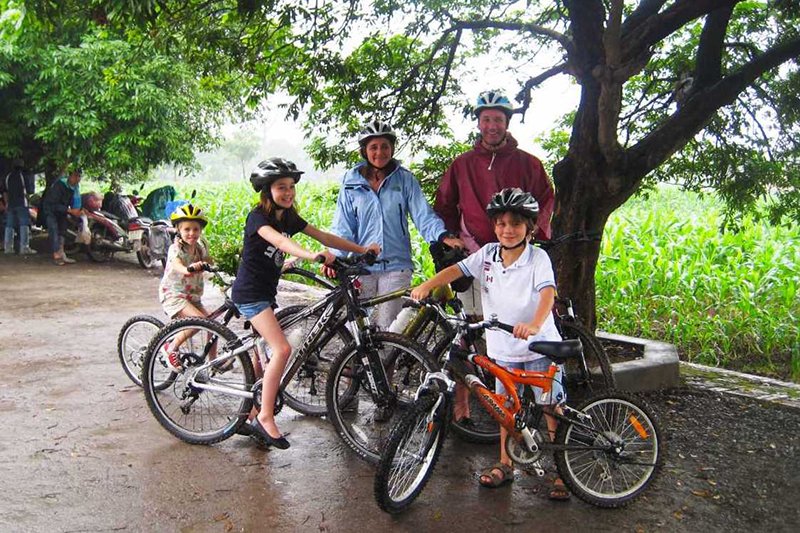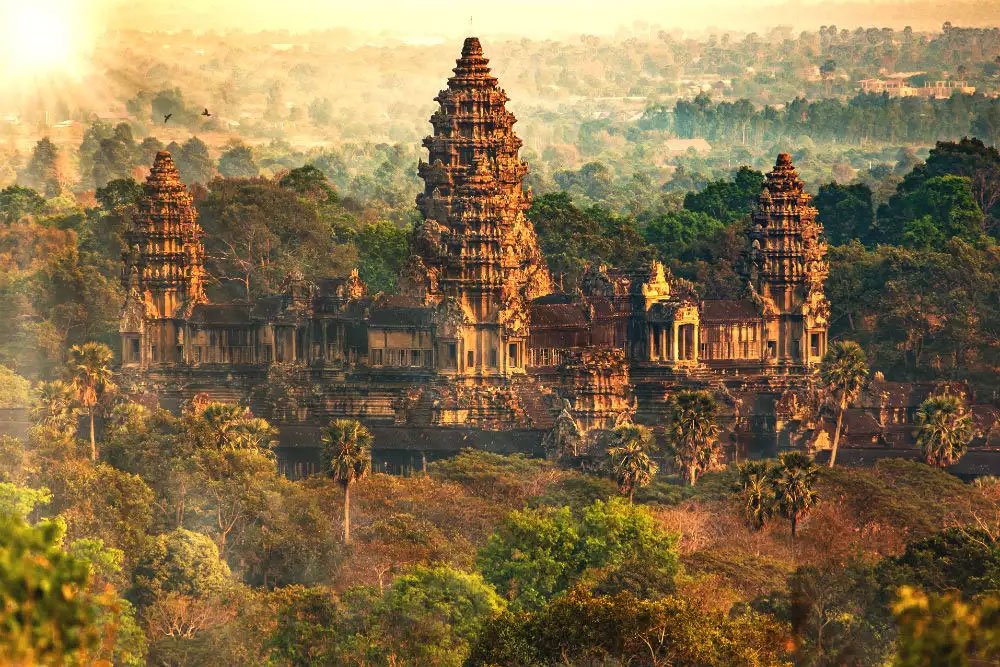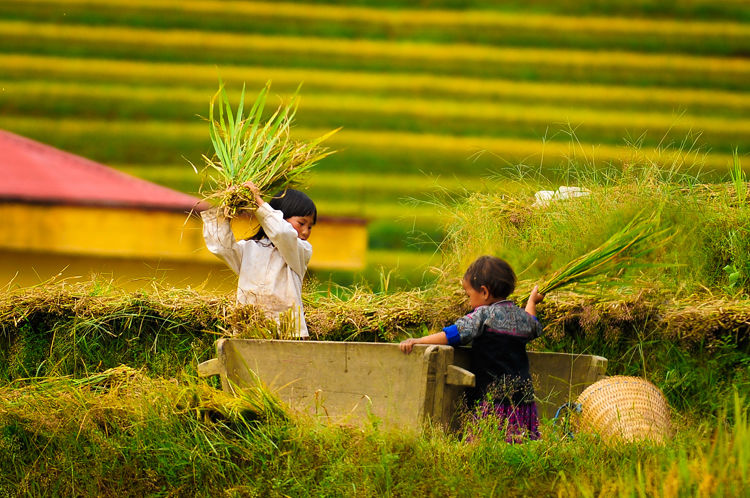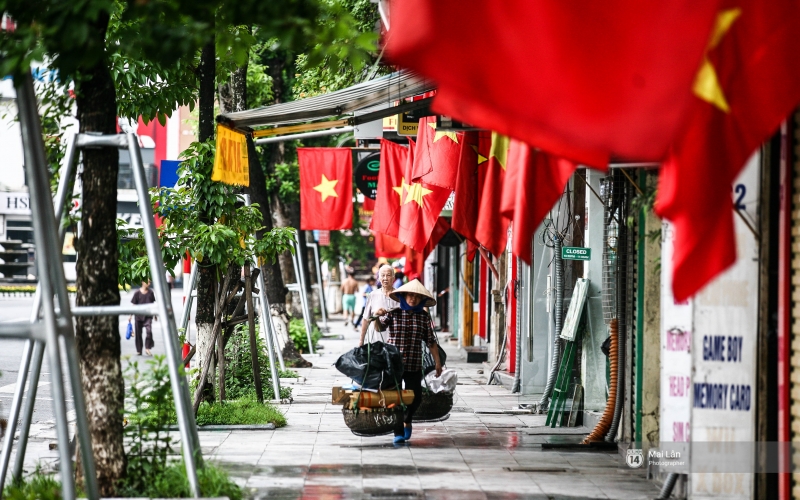15 Ng. 100 Đ. Nguyễn Xiển, Thanh Xuân Nam, Thanh Xuân, Hà Nội 100000
Siem Reap, a name that echoes with the grandeur of an ancient empire, is more than just a gateway to the majestic temples of Angkor. While undoubtedly the primary magnet, this captivating Cambodian city offers a vibrant tapestry of cultural experiences, thrilling adventures, and a burgeoning culinary scene that extends far beyond the temple walls. It’s a destination where history whispers from every stone, and contemporary Cambodian life buzzes with energy and resilience.
If you dream of witnessing sunrise over Angkor Wat, delving into the mysteries of jungle-clad temples, exploring bustling markets, or immersing yourself in authentic Cambodian traditions, Siem Reap promises an unforgettable journey. It's a place where ancient wonders meet modern charm, leaving an indelible mark on every traveler's heart.
This extensive guide will take you on an immersive exploration of Siem Reap, revealing its profound historical significance, showcasing its most iconic and hidden attractions, and providing invaluable tips to help you craft the perfect itinerary. From the spiritual majesty of Angkor Wat to the vibrant energy of Pub Street, prepare to be enchanted by the multifaceted allure of Siem Reap.
Siem Reap’s identity is inextricably linked to the Angkorian Empire, a powerful civilization that flourished from the 9th to the 15th centuries. During this golden age, the Khmer kings built an extraordinary complex of temples, hydraulic structures, and cities that stand as one of humanity’s most remarkable architectural achievements. Siem Reap literally means "Siam Defeated," a name given after a 17th-century victory over the Thai army, reflecting its long and often turbulent history.
For centuries, Angkor lay largely forgotten, slowly reclaimed by the encroaching jungle, until its "rediscovery" by French explorers in the mid-19th century. This sparked international fascination, leading to extensive restoration efforts that continue to this day. Today, Angkor Archaeological Park, a UNESCO World Heritage site, attracts millions of visitors annually, making Siem Reap Cambodia’s premier tourist destination.
Beyond the temples, modern Siem Reap has blossomed into a sophisticated tourist hub while retaining its Cambodian essence. The city has seen rapid development, with an array of hotels, restaurants, and shops catering to diverse tastes. Yet, amidst the growth, traditional arts and crafts thrive, local markets buzz with daily life, and the warmth of the Cambodian people shines through.
The city also serves as a crucial economic and cultural center for its province, with the Tonlé Sap Lake providing a vital lifeline, supporting fishing communities and influencing the region's climate and agriculture. Siem Reap offers a compelling blend of ancient splendor, colonial charm, and contemporary vibrancy, making it a truly unique destination.
Siem Reap offers an unparalleled array of attractions, catering to history buffs, spiritual seekers, adventure enthusiasts, and culture vultures alike. Here’s a detailed exploration of the must-see sites and experiences:
The undeniable star of Siem Reap, Angkor Archaeological Park is a sprawling complex encompassing hundreds of temples, ranging from grand, perfectly preserved structures to atmospheric ruins consumed by the jungle. This UNESCO World Heritage site is a testament to the ingenuity, artistry, and spiritual devotion of the Khmer Empire. While it would take weeks to see every temple, here are the absolute must-sees:
Tips for Exploring Angkor:
After a day of temple exploration, Siem Reap's city center comes alive, offering a stark contrast to the ancient ruins.
Phare Ponleu Selpak is not just a circus; it’s a non-profit organization that provides education, vocational training, and artistic opportunities to Cambodian youth from disadvantaged backgrounds. Their evening performances in Siem Reap are a blend of theater, music, dance, acrobatics, and contemporary storytelling, depicting Cambodian life, folklore, and social issues. It’s an incredibly energetic, poignant, and highly entertaining show that supports a worthy cause. Booking tickets in advance is highly recommended.
Just a short drive from Siem Reap, the Tonlé Sap Lake is Southeast Asia’s largest freshwater lake and a UNESCO Biosphere Reserve. It’s a vital lifeline for millions of Cambodians, supporting a unique ecosystem and the fascinating floating villages that call its waters home.
Taking a boat trip on the Tonlé Sap provides a stark contrast to the ancient temples, offering a glimpse into the resilient and resourceful lives of the Cambodian people who depend on this remarkable lake.
The Cambodia Landmine Museum, located just outside Siem Reap (near Banteay Srei), offers a sobering and essential insight into Cambodia’s tragic past and the ongoing efforts to clear landmines. Founded by Aki Ra, a former child soldier who now dedicates his life to demining, the museum showcases a collection of defused landmines and ordnance. It tells personal stories of the victims and the courageous work being done to make Cambodia safe. It’s a powerful and educational experience that highlights the country’s resilience and hope.
The Cambodian Cultural Village is a theme park designed to showcase the diverse cultures, traditions, and historical periods of Cambodia. It features miniature replicas of famous landmarks, traditional Cambodian houses from various ethnic groups, and live performances of traditional dances, Apsara shows, and local customs. While some find it a bit touristy, it offers a condensed overview of Cambodian heritage, especially if you have limited time to travel across the country.
Artisan D'Angkor is a Cambodian social enterprise that aims to revive traditional Khmer arts and crafts while providing employment opportunities to young Cambodians. You can visit their workshops in Siem Reap to see artisans practicing stone carving, wood carving, lacquering, silk painting, and silver plating. It’s a great place to learn about these intricate crafts and purchase high-quality, ethically produced souvenirs.
Siem Reap’s food scene has exploded in recent years, offering everything from authentic street food to sophisticated fine dining.
To make the most of your trip to Siem Reap, consider the following practical tips:
Getting There:
Getting Around:
Accommodation:
Siem Reap boasts an incredibly diverse range of accommodation, from luxurious 5-star resorts with stunning pools and spas to charming boutique hotels, comfortable guesthouses, and budget-friendly hostels. There's something for every budget and style. It's advisable to book your accommodation in advance, especially during the peak season.
Best Time to Visit:
The best time to visit Siem Reap is during the dry season, from November to February. The weather is cooler and less humid, making it ideal for temple exploration and outdoor activities. The hot season (March to May) can be very warm, while the rainy season (June to October) brings lush green landscapes but also daily downpours, which can sometimes make rural roads muddy. However, the rainy season also means fewer crowds and vibrant, refreshed scenery.
Food and Drink:
Siem Reap is a culinary delight. Don't miss:
Cultural Sensitivity:
Cambodians are incredibly welcoming and respectful people.
Responsible Tourism:
Choose tour operators, hotels, and businesses that employ local staff, use local products, and contribute to the local community. Support social enterprises like Phare Ponleu Selpak and Artisan D'Angkor. Be respectful of local customs and the environment.
Siem Reap is not just a destination; it’s an experience that leaves a profound impact. Here’s why it should be at the top of your travel list:
Navigating the vastness of Angkor Archaeological Park and experiencing the best of Siem Reap can be overwhelming for first-time visitors. This is where Golden Trail Travel becomes your invaluable partner.
Golden Trail Travel specializes in crafting immersive and memorable tours throughout Cambodia. Their expertise in logistics, local insights, and commitment to customer satisfaction make them the ideal choice for exploring Siem Reap and beyond.
Here’s how Golden Trail Travel can enhance your Siem Reap adventure:
By choosing Golden Trail Travel, you're not just booking a tour; you're securing a meticulously planned and expertly guided journey that unlocks the profound wonders and vibrant spirit of Siem Reap with unparalleled ease and deep insight.
"Our trip to Siem Reap with Golden Trail Travel was simply perfect! Our guide, Mr. Sopheak, was incredibly knowledgeable about Angkor Wat and made the history come alive. The sunrise tour was unforgettable, and we really appreciated the comfortable transportation and thoughtful itinerary. Highly recommend them for anyone visiting Cambodia!" – Olivia M., USA
"We booked a 4-day Siem Reap tour with Golden Trail Travel, and every detail was handled flawlessly. From the airport pickup to our personalized temple hopping, everything was seamless. They even arranged a fantastic cooking class for us. Their team is professional, friendly, and truly made our Cambodian adventure special." – The Johnson Family, UK
"I wanted to see Angkor but also experience local Cambodian life. Golden Trail Travel crafted an amazing itinerary that included not just the main temples but also a trip to Kampong Phluk floating village and a visit to Phare Circus. It was a perfect blend of history and culture, all stress-free thanks to their excellent organization. Their website https://goldentrailtravel.com/ was easy to use too!" – Hiroshi S., Japan
Siem Reap, with its ethereal ancient temples, bustling markets, vibrant art scene, and the enduring warmth of its people, stands as a testament to Cambodia's rich past and resilient present. It’s a place that transcends the typical tourist destination, offering a journey into the soul of a nation.
From the first glimpse of Angkor Wat at dawn to the final mesmerizing performance of the Cambodian Circus, Siem Reap promises moments of awe, reflection, and pure joy. It’s a city that invites you to explore, to learn, and to connect deeply with its history and its people.
Embark on this extraordinary adventure, and let the magic of Siem Reap unfold before you. And when you’re ready to transform your dreams into reality, remember that Golden Trail Travel is your trusted partner, dedicated to crafting the perfect, seamless, and unforgettable journey through the wonders of Siem Reap and the heart of Cambodia. Visit https://goldentrailtravel.com/ today to begin planning your Cambodian escape.
Q1: What is the main attraction in Siem Reap? A1: The main attraction in Siem Reap is undoubtedly the Angkor Archaeological Park, home to the iconic Angkor Wat and hundreds of other ancient temples of the Khmer Empire.
Q2: How many days do I need to visit Siem Reap? A2: A minimum of 3 full days is recommended to see the main temples of Angkor (Angkor Wat, Angkor Thom, Ta Prohm). For a more comprehensive experience including Banteay Srei, Beng Mealea, a floating village, and exploring the city, 4-5 days would be ideal.
Q3: What is the best time of year to visit Siem Reap? A3: The best time to visit is during the dry season, from November to February, when the weather is cooler and less humid, making temple exploration more comfortable.
Q4: Do I need a visa for Cambodia? A4: Most nationalities require a visa to enter Cambodia. You can obtain a visa on arrival at Siem Reap International Airport, apply for an e-visa online before your trip, or get one from a Cambodian embassy/consulate in your home country. Check the latest requirements for your nationality.
Q5: What currency is used in Siem Reap? A5: The official currency is the Cambodian Riel (KHR), but the US Dollar (USD) is widely accepted and virtually serves as the primary currency for tourists. ATMs dispense USD. Small transactions often receive change in Riel.
Q6: Is it safe to travel to Siem Reap? A6: Yes, Siem Reap is generally considered very safe for tourists. Petty crime like bag snatching can occur, so always be aware of your belongings, especially in crowded areas like markets or Pub Street.
Q7: How do I get around Angkor Archaeological Park? A7: The most popular and convenient way is to hire a tuk-tuk driver for the day or multiple days. You can also rent bicycles for closer temples or hire a car/van with a driver for more comfort, especially with larger groups. Tour operators like Golden Trail Travel provide pre-arranged transportation.
Q8: What should I wear when visiting the temples? A8: When visiting temples, which are sacred sites, you must dress modestly. This means covering your shoulders and knees. Lightweight, breathable clothing is best for the warm climate.
Q9: Can I buy an Angkor Pass in advance online? A9: No, the official Angkor Pass can only be purchased in person at the Angkor Enterprise Ticket Office (located a few kilometers from the city center). You will have your photo taken there for the pass. Be wary of unofficial online vendors.
Q10: How can Golden Trail Travel help me plan my Siem Reap trip? A10: Golden Trail Travel offers comprehensive, customizable tour packages for Siem Reap, including expert local guides, comfortable transportation (tuk-tuks, cars), airport transfers, accommodation suggestions, and curated itineraries that cover all the major temples and unique cultural experiences. They handle all the logistics, ensuring a seamless and enriching trip. Visit https://goldentrailtravel.com/ to explore their options.

.jpg)
We have a wide range of kids bikes for our bike tours in Hanoi Vietnam. Our small bicycles are used for both boys and girls. There is no difference between boy bikes and girl bikes. The bike frame is the same – Children’s bikes are sized by wheel rather than frame because it’s the wheels that determine the proportions of the rest of the bike. Make sure your child can operate the brake and gear levels comfortably, and that the pedals are positioned for safe stopping.
May 28, 2025
.jpg)
A single speed bicycles or a fixed gear bike is a type of bicycle with a single gear ratio. These bicycles are without derailleur gears, hub gearing or other methods for varying the gear ratio of the bicycle. There are many types of single speed bicycles such as single speed bikes for children, cruiser type bicycles, classic commuter bicycles, unicycles, bicycles designed for track racing, fixed-gear road bicycles, and single-speed mountain bikes.
May 28, 2025
.jpg)
Mountain bikes are designed to be ridden over rugged terrain and technical trails with logs, rocks, roots and other obstacles. They have a sharp frame geometry that puts the rider in a commanding position to pedal and climb efficiently. They have lower gear ratios that allow riders to pedal through steep and difficult terrain. Because of their intended use, mountain bikes are sturdy and overbuilt to handle the abuse of the trails. They usually have larger, heavily knobbed tires and strong brakes like hydraulic disc brakes. Many mountain bikes feature a kind of suspension shock over the front tire or both front and rear, allowing the frame to comply with the bumps, jumps and challenges of the trail.
May 28, 2025
.jpg)
Giant are the world’s leading brand for quality and safety in bikes. Giant Anyroad bicycles are designed with a lightweight yet durable ALUXX alloy frame featuring a taller headtube and increased toptube stand-over distance for confident handling.
May 28, 2025

Hanoi Cycling lets you experience the beautiful countryside of the Vietnam’s capital, as well as rural Hanoi village life from up close. Pedaling on the back roads, through countryside lanes while greeting local farmers and school kids as you pass by, all add to an immersive experience!
May 28, 2025
.jpg)
Hybrid bicycles are a combination of a road bike and a mountain bike. Hybrid bikes feature relaxed frame geometry and raised handlebars, meaning that you sit up straigh
May 28, 2025
.jpg)
At the inaugural night tour of Cuc Phuong National Park in northern Vietnam on Saturday, close to a hundred visitors took part in a variety of activities.
A park spokesman said that most visitors were excited to take part in the trip.
May 28, 2025

In Cambodia, the climate is tropical, and stays warm all year long. It is governed by the monsoon winds, so that this country has two main seasons in a year.
May 28, 2025

Mu Cang Chai is a highland district of Yen Bai province, about 280km from Hanoi. Each season, this place receives thousand domestic and international tourists. The district lies at the foot of the Hoang Lien Mountains, at an altitude of 1,000 m above sea level. To reach Mu Cang Chai district, go through Khau Pha pass - one of the four Great Passes of the Northwest.
May 28, 2025

People said that “If one has not visited floating market, he has not visited the south-west of Vietnam”. Literally, floating markets which have been around for a long time make the liveliest part of life in the south-west, the land of rivers, canals and ditches.
May 28, 2025

If you are in Vietnam on September 2, you will feel the extraordinary daily life of Vietnamese people. So what activities are recommended on this day?
May 28, 2025

Pottery class Bat Trang is one of activity with unique experience which help people to reduce stress and improve the creativity.
May 28, 2025

Prime Minister Prayut Chan-o-cha says Thailand will open the country to visitors from 46 countries instead of only 10 Covid-19 low-ríkyy countries announced earlier, starting from Nov 1.
May 28, 2025